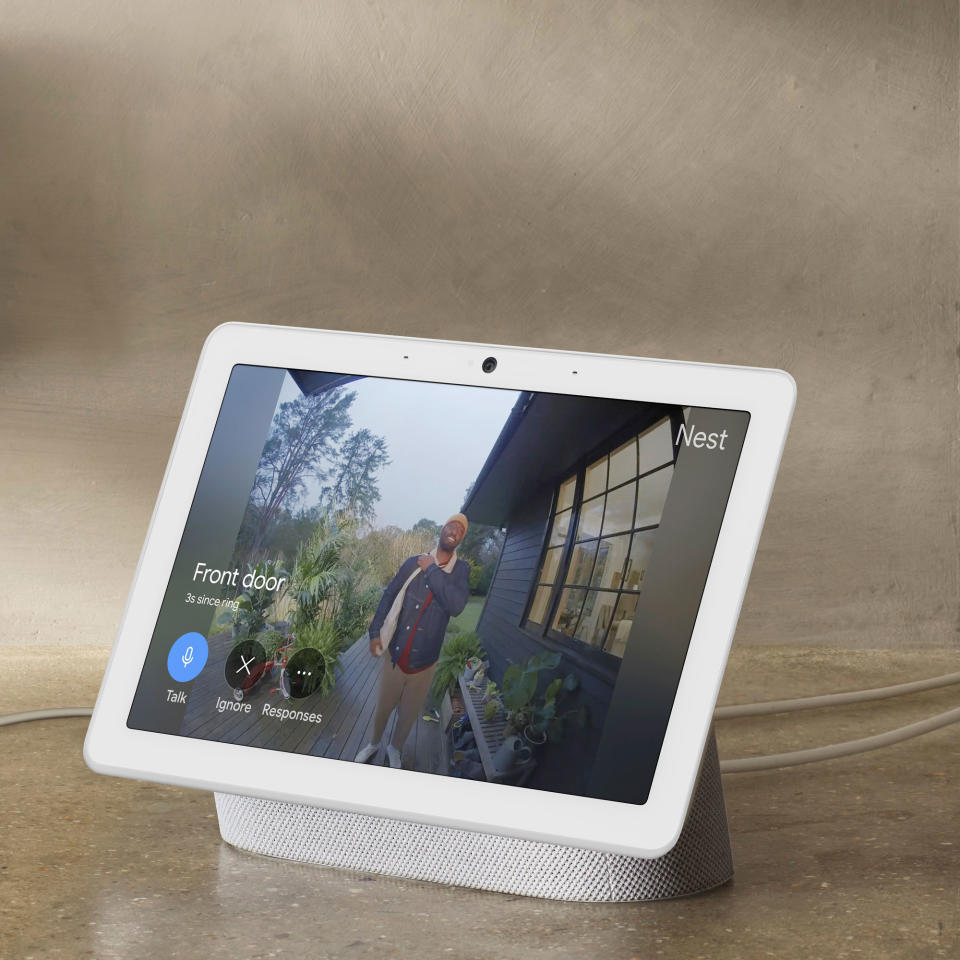You may already know about the best video doorbells, but what about smart home security systems?
A whole home system connects a variety of products together, from the aforementioned video doorbells and cameras, to sensors, sirens, security keypads and even panic buttons. They tend to be sold in packages of varying size – the bigger your house is, the more kit you’ll need. But you can always add on extras if you want to tailor the system to your property’s specific requirements.
‘With smartphone functionality,’ explains Kevin Spencer, Product Manager at Yale UK, ‘smart security gadgets offer complete freedom to monitor, control and capture live footage of inside and outside of your home wherever, whenever. In short, smart security products have all the benefits of traditional security systems, alongside the benefit of convenience and peace of mind.’
How do smart home security systems work?
A smart home security system is a set of internet-connected security cameras, motion sensors, door locks, window/door sensors and even sirens that connect wirelessly together.
The majority of systems are driven by a ‘hub’, usually a small nondescript box that’s connected directly to your broadband router. The hub sends information wirelessly from each element of the system to and from your smartphone. Once all connected together, if someone opens a window or door, or walks past a sensor, you will receive an alert on your phone. And if they stray into the camera’s field of vision, you’ll receive either a picture or a short video clip.
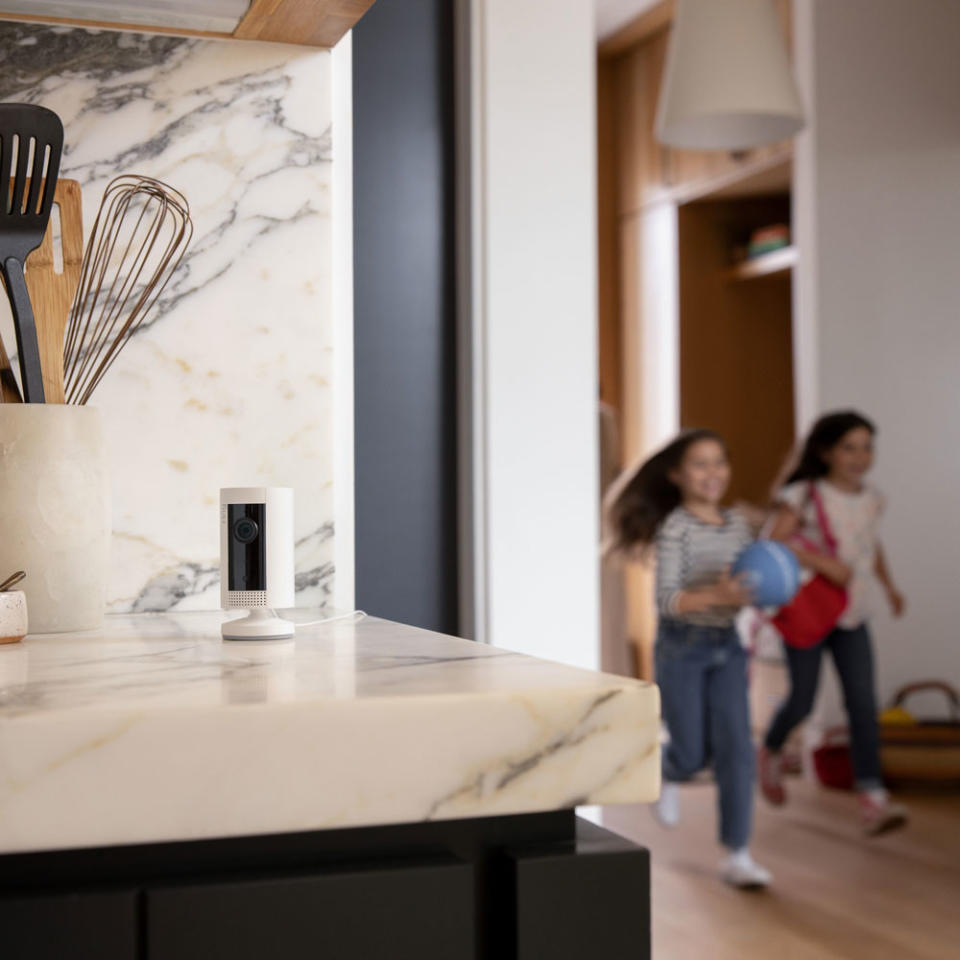
Some systems can then sound an alarm or contact the emergency services, and most also enable you to talk through the camera. The latter is ideal if you’re saying ‘hi’ to the kids who’ve just got back from school, or for shouting at the dog to get off the sofa. Because smart home security doesn’t just have to be about keeping potential burglars away, key fobs, smartphone GPS and even facial recognition software can help keep an eye on the kids or an elderly relative, letting you know when they get home safely, or if they leave the house unexpectedly.
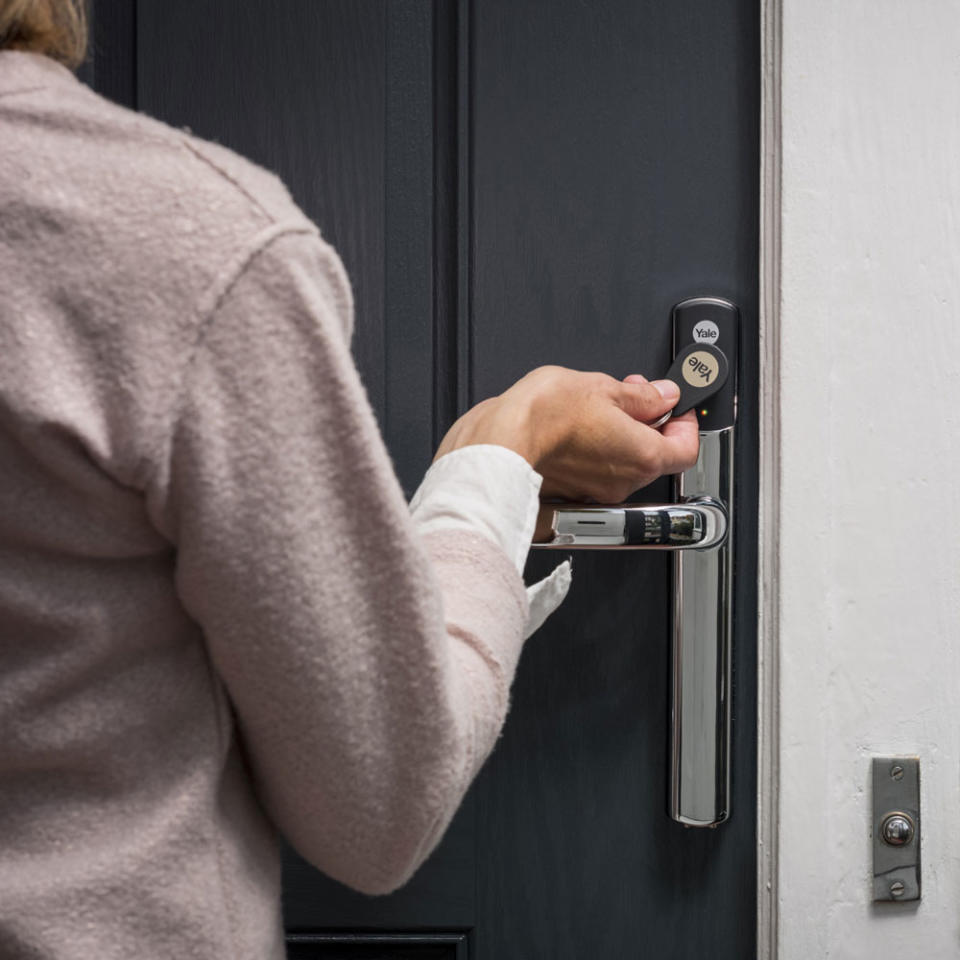
‘Although “smart” by nature,’ explains Kevin from Yale UK, ‘smart security gadgets work simply through a Wi-Fi or wireless connection via a smartphone or tablet. This ensures complete flexibility over how to secure or monitor your home. This smart technology allows for the ultimate control, through instant notifications directly through to a smartphone.’
‘This flexibility,’ continues Kevin, ‘allows homeowners to remotely monitor their property whatever the time, wherever the location. This also means homeowners can rely on their own diligence to protect their home. And not relying on neighbours or passers-by to notify you of any unusual activity in or around your home.’
What devices do smart home security systems include?
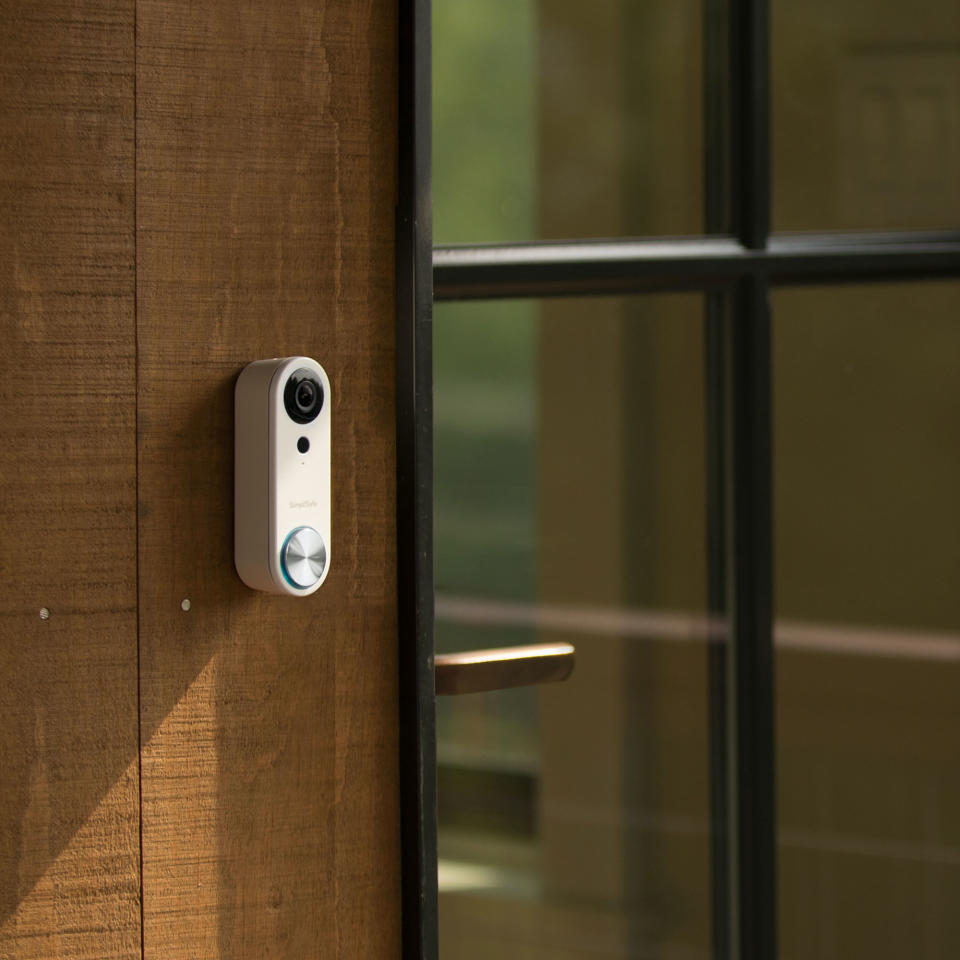
All systems will include cameras, ideally a combination of both indoor and outdoor ones works best, offering coverage of the garden and living space as well as being a visual deterrent. Look for models with multiple sensors – motion and heat for instance – that help to reduce the number of false alerts.
If you don’t want a camera in every room, motion detectors (at least in the hallways) can do the job almost as well, sending alerts and setting off an alarm when triggered. Built-in sirens are often a given on whole home systems but these are often also available on indoor and outdoor cameras, too.
There’s also the option to choose between wired or wireless devices. Wireless devices are great as you won’t don’t need to worry about recharging a battery. While battery powered versions are an ideal choice for renters who might wish to take their tech with them when they move on.

If you’re not sure which device to start your smart security set up with, probably the easiest and most practical is a video doorbell. Having the freedom to answer your door and see and speak to callers via your smartphone is a huge bonus when you’re not home. As for your home’s exterior, the best security cameras bulk up the security around your home and give you eyes on your property and boundaries. Some cameras have built-in security floodlights that switch on when the motion sensors are activated, deterring intruders.
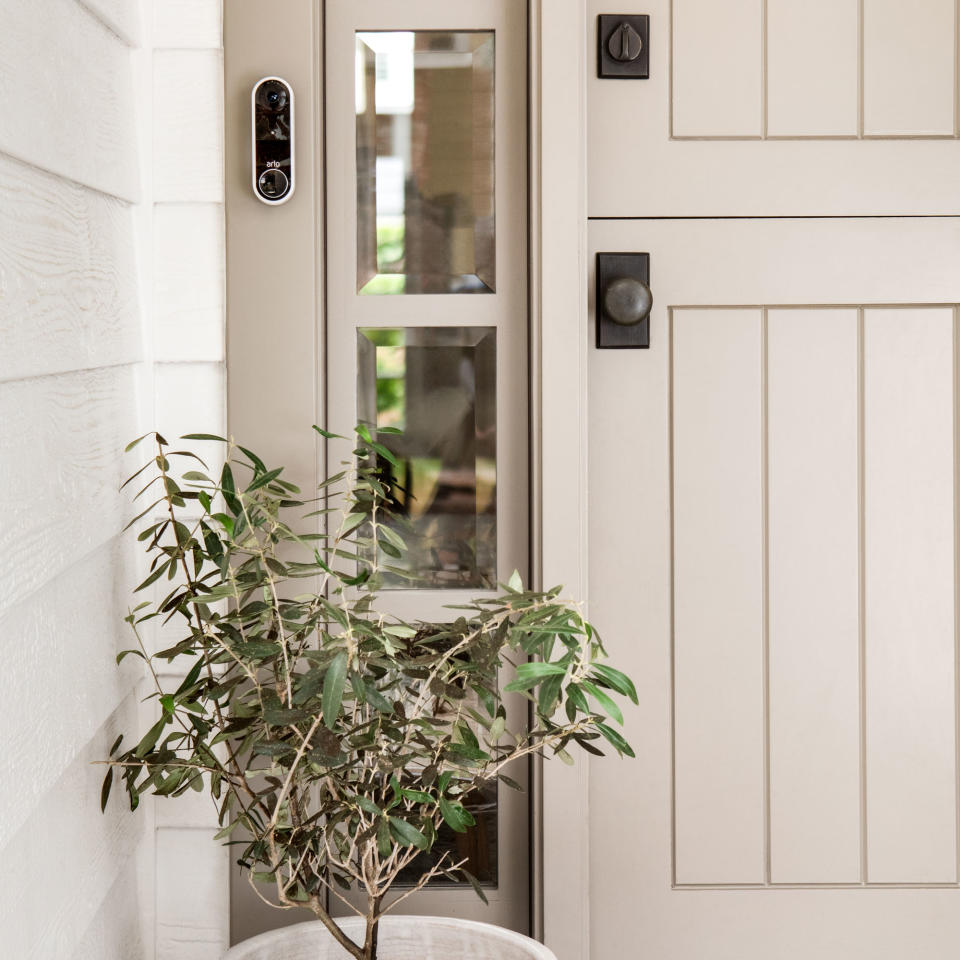
The more expansive systems can trigger a loud siren if they detect someone trying to break in. Others can even call the police on your behalf. Indoor cameras give you the ability to monitor rooms in your home, your pets’ behaviour and even troublesome teens. They give you a bird’s eye view of your home’s interior, so you can keep tabs on your family’s comings and goings. Many of the latest models now come with lens covers, too. This affords you added privacy, so you can block the camera without having to turn it off completely.
Relatively new to the home security system market is Philips Hue. While they have dominated the smart lighting market for years, the brand has expanded to include smart security cameras too so you can link your lighting and cameras together and control them from one system.

SimpliSafe 7 Piece Home Security System
This set includes a keypad, exterior camera, three entry ensors , one motion sensor and the Simplisafe base station. You can add additional SimpliSafe devices at any time to expand your system.

Yale Sync Smart Home Alarm 14 Piece Kit
This extensive pack is an ideal for a family home. It includes an instantly recognisable Yale yellow siren, five motion detectors, four door/window contact sensors and indoor/outdoor security camera, a keypad, remote key fob and a smart hub.

Ring Alarm pack
Perfect if you already have an existing Ring doorbell or security camera, this set will link the lot together and make it accessable via the key pad, together with a new motion detector, contact sensor for a door or window frame.
How much will it all cost?
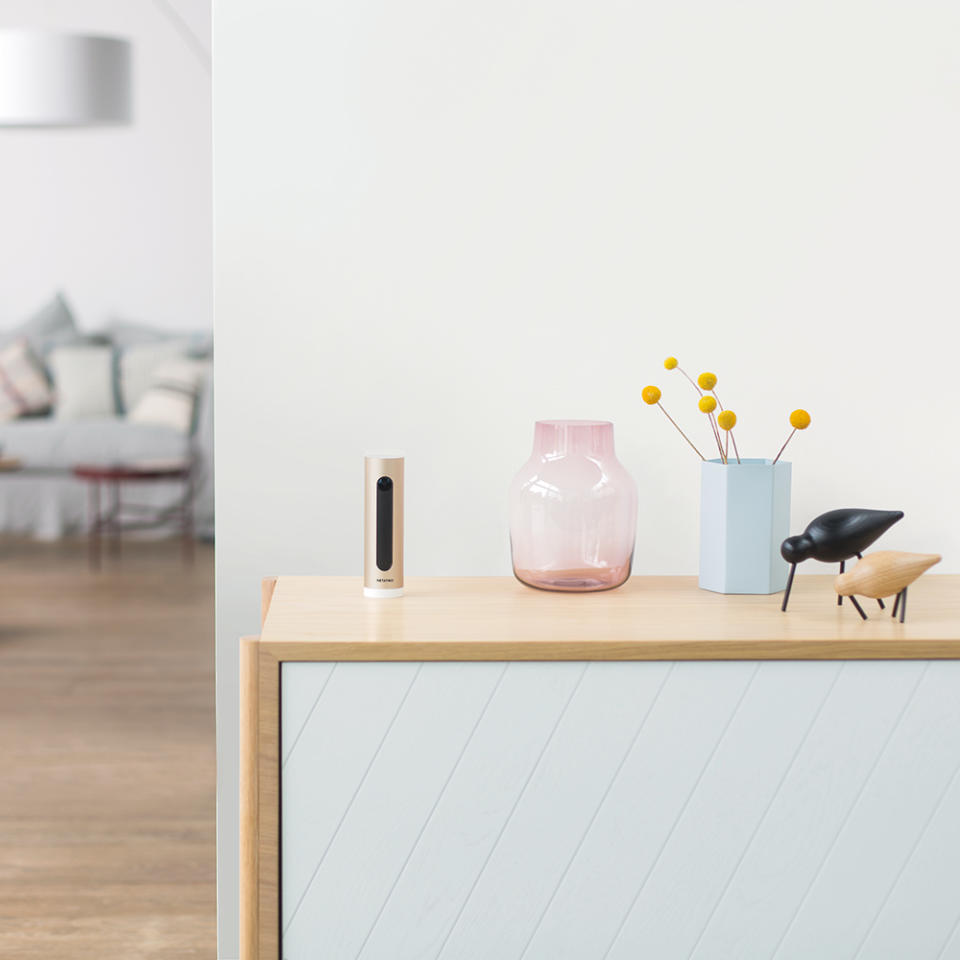
For around £200, you can buy a basic smart security system with a camera, hub and maybe a door/window sensor. But if you need to cover your whole house, you’ll need multiple sensors and cameras. These cost from around £30 each, with cameras at around £150.
It’s also best to stick to the same brand for a whole home system, so if you already own a Nest doorbell or a Ring camera, choose a similarly branded security system for ease of use. Linking your security devices up to a smart home network means you can then control them all via your smart speaker. Google Nest and the Amazon-owned Ring products are obvious choices, but most devices will have the capability to connect to Siri, Alexa or Google Assistant. ‘Yale’s Sync Smart Home Alarm range has been developed to work conveniently with other smart security products in the Yale range,’ explains Kevin, ‘but also to work with brand partners in the smart space. This includes leading voice assistants such as Amazon Alexa and Google Home.
As a rule, expect to pay between £350 and £500 for a whole home system that will cover a three-bed house.
What about recording?
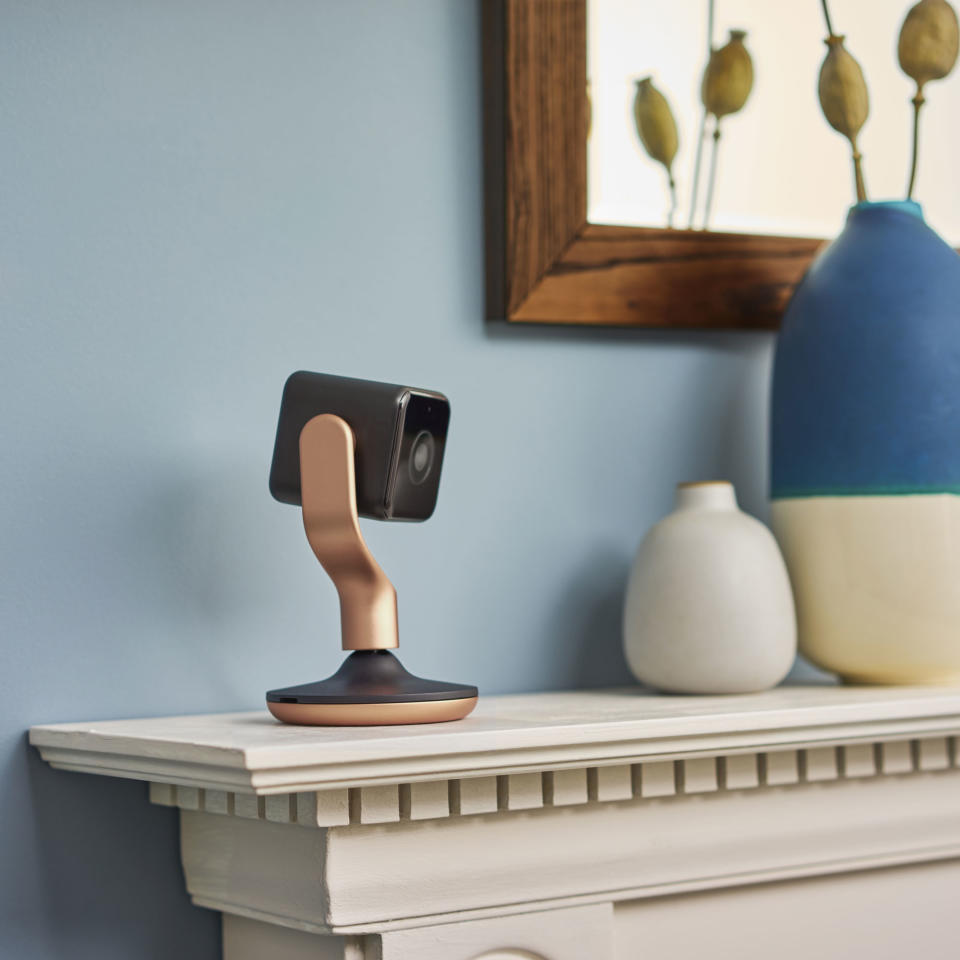
Most smart security companies save the best features for those that sign up to a subscription service. These extras can include recording and storing video, as well as contacting the emergency services. Expect to pay from around £3.50 per month.







